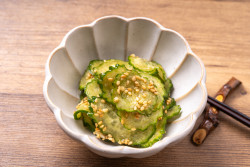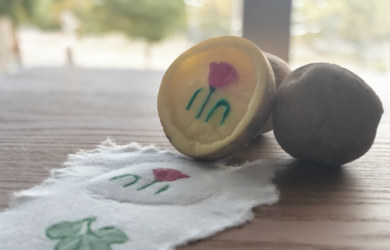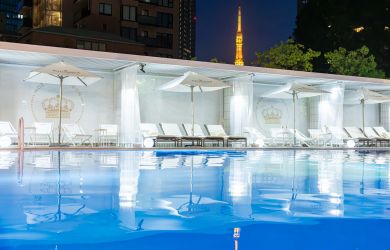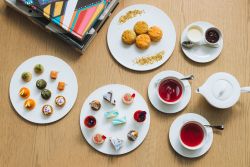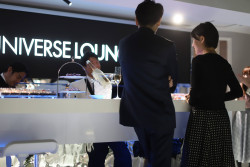
Originally published on metropolis.co.jp on January 2011

Photos by James Hadfield
There were two Bloody Marys on the bar counter. “Try them,” said the bartender. They looked alike, but I knew that one was the “right” one, made in the style that he teaches, and the other was not. He wasn’t saying which was which.
Fortunately for this article, the difference was blindingly obvious. One was thin and anemic. The other was more like a milkshake, though there wasn’t a drop of cream in the drink. The difference was in the shake.
 Ask a top Japanese bartender what distinguishes them from their American or European counterparts and they will almost always talk about shaking. In the West, they say, bartenders mix every drink alike, shaking like it’s showtime. The Japanese bartender, by contrast, has an array of shakes and can discuss in detail the science behind each one.
Ask a top Japanese bartender what distinguishes them from their American or European counterparts and they will almost always talk about shaking. In the West, they say, bartenders mix every drink alike, shaking like it’s showtime. The Japanese bartender, by contrast, has an array of shakes and can discuss in detail the science behind each one.
Takayuki Suzuki of the Park Hotel’s Bar à Vins uses a hard shake for his Bloody Mary. As the name indicates, this is more rigorous than usual—and bloody difficult. When Suzuki trains other bartenders (150 and counting), the hard shake is always the final technique he teaches.
“You have to master the basics before you can advance to the hard shake,” he told me.
“Let’s skip straight to the hard shake,” I said, and so we did.
The lesson began with a classic three-part shaker filled with rice. Suzuki told me to hold it with the spout facing away—the opposite to the usual grip. He taught me a two-part shake, to blend the ingredients, then aerate them.
 It’s a frantic, convulsing, arching motion. I filmed it (twice) and slowed it down for analysis. Give or take a thrust, it takes around 10 shakes a second for 15 seconds to make Suzuki’s Bloody Mary. The aim is to get the ice moving in unison, slamming into each end. It’s about rhythm, not power.
It’s a frantic, convulsing, arching motion. I filmed it (twice) and slowed it down for analysis. Give or take a thrust, it takes around 10 shakes a second for 15 seconds to make Suzuki’s Bloody Mary. The aim is to get the ice moving in unison, slamming into each end. It’s about rhythm, not power.
My Bloody Mary wasn’t bad. Like Suzuki’s, it slowly built a creamy head, resembling a little red Guinness. My drink was livelier than my teacher’s, but weaker. I’d shaken it too long, frothed it too much, and watered it down.
It’s just as well I couldn’t do it perfectly: Suzuki believes customers prefer drinks that demand a master’s technique. “They don’t come here for something they could make at home,” he says.
Suzuki’s margaritas get only the most cursory shake. He says he pictures the drink as a shot with salt and lime wedge, so he doesn’t want to blend the ingredients too well. For the highball boom, he created a range of unique whisky soda variations, including an Ardbeg with Champagne and angostura bitters, and a hot highball that has balsamic vinegar as an ingredient.
 His unique take on bartending reflects his unique background. After learning the trade in an upmarket Roppongi bar, Suzuki headed off to Manhattan and ended up mixing drinks at the Copacabana. As he tells it in his book, The Perfect Martini, while his colleagues were bartenders dreaming of an acting break, he was taking all kinds of gigs to pay his way through bartending school.
His unique take on bartending reflects his unique background. After learning the trade in an upmarket Roppongi bar, Suzuki headed off to Manhattan and ended up mixing drinks at the Copacabana. As he tells it in his book, The Perfect Martini, while his colleagues were bartenders dreaming of an acting break, he was taking all kinds of gigs to pay his way through bartending school.
Such broad experience has produced a man who can read his customers exceptionally. He tells me he can usually guess an American customer from a Brit by the seat they choose (Brits head straight to the window, Americans to the counter). He says there’s a vast difference in banter between Japanese and US bars (short and upbeat in the States, longer and 50 percent negative in Japan). And he says he can tell from the swing of a door whether it’s a male or female, regular or new face coming through (this one is definitely true—his bar has glass doors).
With all this in mind, it’s probably a waste of the man’s talents to ask him for a Scotch, but Bar à Vins also has one of the city’s best whisky collections, as an official bar of the Scotch Malt Whisky Society, and there are few evenings that don’t finish best with a dram of single malt.
- Bar à Vins: 25F Shiodome Media Tower, 1-7-1 Higashi Shimbashi, Minato-ku. Tel: 03-6252-1111. Open Mon-Sat 5pm-2am, Sun 5-10pm. www.parkhoteltokyo.com
- See www.bartenderschool.jp for information about Takayuki Suzuki’s bartending school.
 The English translation of The Perfect Martini will be released by Komakusa Publishing later this month, price ¥2,100.
The English translation of The Perfect Martini will be released by Komakusa Publishing later this month, price ¥2,100.
